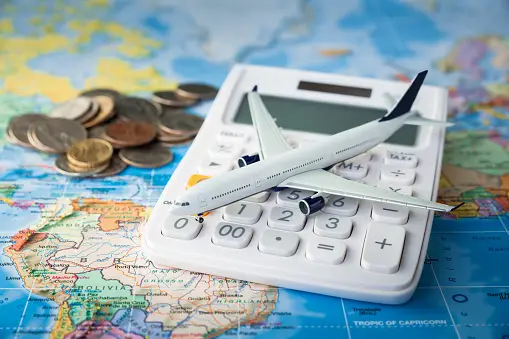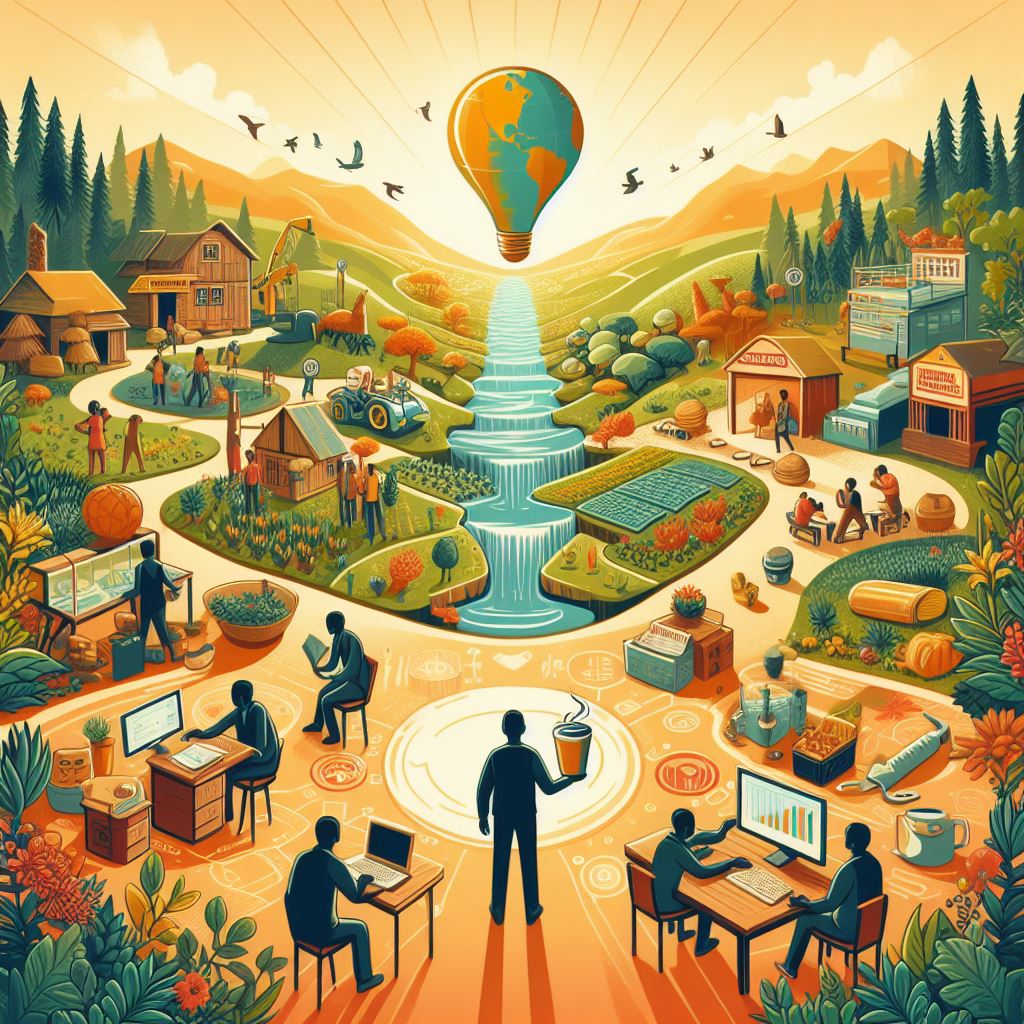Discover how biodiversity loss is intensifying the global environmental crisis in this in-depth exploration. Learn how ecosystem degradation accelerates climate change, threatens food security, and destabilizes economies. Uncover urgent conservation strategies and understand why preserving biodiversity is crucial for a sustainable, resilient future beyond carbon emissions.
Introduction
While much of the conversation around the global environmental crisis focuses on carbon emissions and the looming threat of climate change, there’s another, equally pressing issue that often flies under the radar: For example, the most discussed factors influencing global changes are called the ‘‘holy trinity ’’ of global change, namely, climate change, population increase, and <start & end span> biodiversity loss. This unobtrusive problem is intensifying rapidly which in turn leads to the deterioration of ecosystems and climate systems and adverse consequences on natural and man-made systems. Of course, saving carbon dioxide emissions is a very important matter, but this approach does not take into account one of the most significant sides of the environmental crisis which we are experiencing.
1. Understanding Biodiversity and Its Role in Ecosystem Stability
Biological diversity is the total sum of the variety of life forms on the planet, including microorganisms and all forms of mammals and everything in between and the environment where they exist. This diversity exists on multiple levels: the differentiation of genes that exist in one species, the differentiation of species in one habitat, and the differentiation of habitats in one region. Due to the high density of species in the ecosystem, and the many varied forms of life support in the environment, complex interactions enable the systems maintenance, yield, and variability. In diverse ecosystems species interactions contribute to the ability of systems to recover, evolve and support their functions in the face of each shock.
This is because, when there is no biodiverstiy, ecosystems are left open to failure. The complex biological organization which is the foundation of every environment guarantees continued viability of indispensable processes, which include pollination, decomposition of nutrients, and predatory balance. Every species extinction has the capacity of causing a ripple effect that is able to affect food pyramids and shift the balance of ecosystems. Even worse, ecosystems that contain less number of species are more vulnerable to environmental stressors like tempests, pesticides, diseases among others. To summarize, complexity is the mother nature’s insurance against fluctuation and change and decline in it signals a failure of the ecosystem.
2. The Accelerating Rate of Biodiversity Loss
Currently we are in the 6th mass extinction and this is the period where species loss is happening at an alarming rate. Recent surveys show that species are exiting the face of Earth at a rate which is 100 to 1000 fold increased from natural baseline rates mostly because of human influence. Some of the factors human activities that have contributed to this increased rate of decline include: habitat destruction, overexploitation of resources, pollution and climate change. Loss of habitat for economic activities such as, expansion of urban areas and construction of roads and other infrastructures continues decimating the natural habitats, overfishing, poaching. They include things such as hunting, fishing, and trade all of which are causing the extinction of species across the globe. Also, the pollution with plastics, chemicals and agriculture produce is leading to destruction of the environments, extermination of living organisms and polluting natural resources such as water.
Saying that there is the loss of species means that every life form is in danger and not just animals or special plants. There is evidence that removal of species could lead to several impacts in ecosystem. Such as bees and butterfly are very rampant and very important in business as they affect pollination of most crops and therefore hunger has got firm root in our planet. Likewise, depletion of predators results in overgrazing and poor vegetation hence leading to destruction of the ecosystem. This rapidly increasing rate of extinction is an alarming threat is not only to the ecosystems but to the societies which depend on the latter as a source of basic life support provisions.
3. Biodiversity Loss and Climate Change: A Vicious Cycle
The relationship between these two global phenomena is undeniable: biodiver-sity and climate change are in fact two sides of the same coin. Forests, wetlands and coral reefs are the biome that helps to lessen the effects of climate change. For example, forests act as carbon sinks, help in influencing water regimes, and stabilizing local climate; coral reefs, in this case, help in protecting coasts from storm surges. If there are diverse species in specific ecosystems, the chances of the ecosystem in question delivering these services to the human population is guarantees since it is capable of adapting to changes in climate. But as the species are lost and the ecosystems destroyed, the planet’s capacity to control climate and to store carbon is eroded leading to what can be described as a cycle of heating up the planet.
This loss of biological diversity also poses a challenge to the fight against climate change in as much as it reduces the capability of ecosystems to offer a fight against climate change. Likewise, the Amazon in South America is one of the greatest carbon sinks found in the tropical rainforests, but when the forestry depletes them of their ecosystems, they loses their ability to pull carbon from the air. Climate change also indirectly contributes to the destruction of the bio diversity for instance; changes climate system and put different species at the edge of extinction, as well as widening the effects of harsh weather patterns that also destroy more bio diversity. It worsens the intensity of the global environmental problems, as species loss fuels climate change and at the same time climate change exacerbates the rate of species loss, thus making it hard to solve one issue without worsening the other.
4. Impacts on Human Societies: Food, Water, and Health
The loss of biodiversity directly threatens the foundations of human society, from food security to water resources and public health. Agriculture, which relies on the interrelation of the pollinators, soil organisms and climatic conditions which are strongly dependent on the aspect of diversities, are highly influenced. This, therefore, means that the existence and sustainability of food systems are inversely proportional to the loss of species. The number of bees and other pollinators is decreasing year after year and grain, fruit, vegetable, and tree yields are dropping as well. Also, the same way deforestation puts pressure on agricultural production and affects the lives of millions of people, overfishing and destruction of marine habitats pose a threat to global fisheries and people’s source of protein.
It has been discovered that aside from affecting the availability and quality of the food we eat, biodiversity has an important influence on access to clean water. Habitats—forests, wetlands and rivers clean water, control its flow, and act as a natural protection from floodage. Companies often disrupt the balance of these ecosystems and when this happens, such ecosystems are capable of providing the above services. Furthermore, extinction of species is accorded more with emergence of new diseases that are zoonotic in nature. Whenever man infringes on the natural habitats of the animals, there is s higher chance of a disease that is circulating in the animal community to spill over to the human population as exemplified by COVID-19. These disturbances especially of natural habitats allow the diseases to thrive thus serving as a major threat to mankind.
5. Economic Consequences of Biodiversity Loss
It offers ecosystem services which sustains economies globally but at the same time its decline poses a very senior economic threat. People usually do not pay much attention to the numerous services provided to them in the natural environment such as pollination, water purification, climate control, etc. Without these services these sectors including Agriculture, fishery, forestry and tourism among others would be very hard to undertake. For instance, the extinction of pollinators means a decline in crop production that will translate to high food prices and food shortage, and the decline of marine habitats will lead to the demolishing of fisherman’s economy that relies on fishing and tourism.
Consequently, the economic price tag for lost biodiversity is really high. According to the research done by the World Bank it was postulated that the loses due to ecosystem had ranged up to $2. 7 trillion annually by the year 2030 with a view of enhancing social connectedness and minimizing on the negative social impact that it portrays. This is because the services offered by ecosystem are equally essential in supporting the economic activities even though many of them cannot be seen. However, most of the sectors that directly benefit from the provision of ecosystem services are the ones that contribute to the degradation of the same; this is the classic case of where gain at the present is at the expense of the future. Conservation of the biological diversity is, therefore, not a conservation of the ecological systems but the necessity of economic survival. By investing in conservation, we can protect those resource bases that support the global economy and ensure that these are able to withstand the effects of climate change.
6. Conservation Efforts and Policy Solutions
However, the situation doesn’t leave much to hope for, although there are prospects of global and local conservation. The CBD and the GBF are the international instruments that want to address the biodiversity loss by 2030, setting key goals for the conservation of terrestrial, marine, and freshwater ecosystems, as well as species. They therefore stress the need of reducing degraded habitats, equal use of natural resources and establishment of conservation zones. In the field, many measures – from creation of local marine protected areas to reforestation programs – have proven that focused actions can work wonders to recover lost species and crippled habitats.
However, to address the problem of biodiversity loss one needs more than a set of policies on paper; it needs political will and an effective governance as well as incentives. Positive incentives that ensure environmentally sound land-use practices are also important; and, restrictions of industries that have negative impacts on the biological diversity; and protection of habitats are crucial also. Just as important are, for example, economic instruments that would provide incentives for the proper evaluation of ecosystem services, including payments for ecosystem services (PES) and biodiversity credits. These can work towards achieving consensus of the conservation objectives with the interests of economy, which is the means to the attainment of sustainable development.
7. The Role of Individuals and Communities in Preserving Biodiversity
It is, of course, obvious that governments and businesses can contribute a lot, but ordinary people and communities can also have a positive impact on the preservation of the natural environment. Choosing what can contribute to the deterioration of the environment is also a everyone’s decision Selina; and the little decisions that are made each day add up. Grass root actions like tree planting, restoration of habitats, and any other local conservation efforts are useful for enshrine community based efforts in environmentalism. These efforts do not only serve to enhance the field of conservation biology and practices, but also to strengthen the relationship between people and environment.
One of the core factors is the aspect of education and awareness with the view to support the ability of individuals or communities to act. These findings indicate that people’s awareness of the significance of the concept of biodiversity and what put it on the line makes them act in a meaningful manner as per the goal of conservation. Some examples of using citizen science are monitoring of the species of animals and plants, the reconstruction of damaged landscapes or damaged ecosystems. After all, cultivating proconservation and sustainable development attitude at the community level will go viral to other regions, vital greater shift in cultural and social constructs of the world around and how they seek to preserve it.
Conclusion
Species extinction is a growing issue that if not addressed rightfully will lead to disastrous consequences on the world environment and mankind. Although cutting down carbon emissions are vital, equal attention must draw to the fact that diversity is equally essential to a healthy ecosystem. The extinction rate of species, the degradation of habitat and the consequences thereof in terms of gains and losses will call for more drastic measures.
But all is not lost yet if we move with speed and this calls for an early determination of the case. Conserving of bio-diversity is much more than preserving the endangered animals, it’s all about preserving the balance of life on our planet. Leaders of countries, private companies and other stakeholders need to incorporate the management of biological diversity into environmental space, development strategies and people’s lifestyle. Through the appreciation of the importance of the conservation of these biodiverse features as fundamental to the functional structures of the global ecosystems and our economic model of the world, it is possible to forge a better future for our ecosystems, the climate, and the general well-being of humankind.
The way out involves a paradigm shift in the way man approaches the environment and to acknowledge that the clients of today are the life of tomorrow. While dealing with the confrontation of the global environmental catastrophe, it is necessary to shift from the range of carbon dioxide emissions and take into account the range of anthropogenic negative impacts on the environment. There is no better time than now to do something about the loss of the species that helps support life on earth.


























